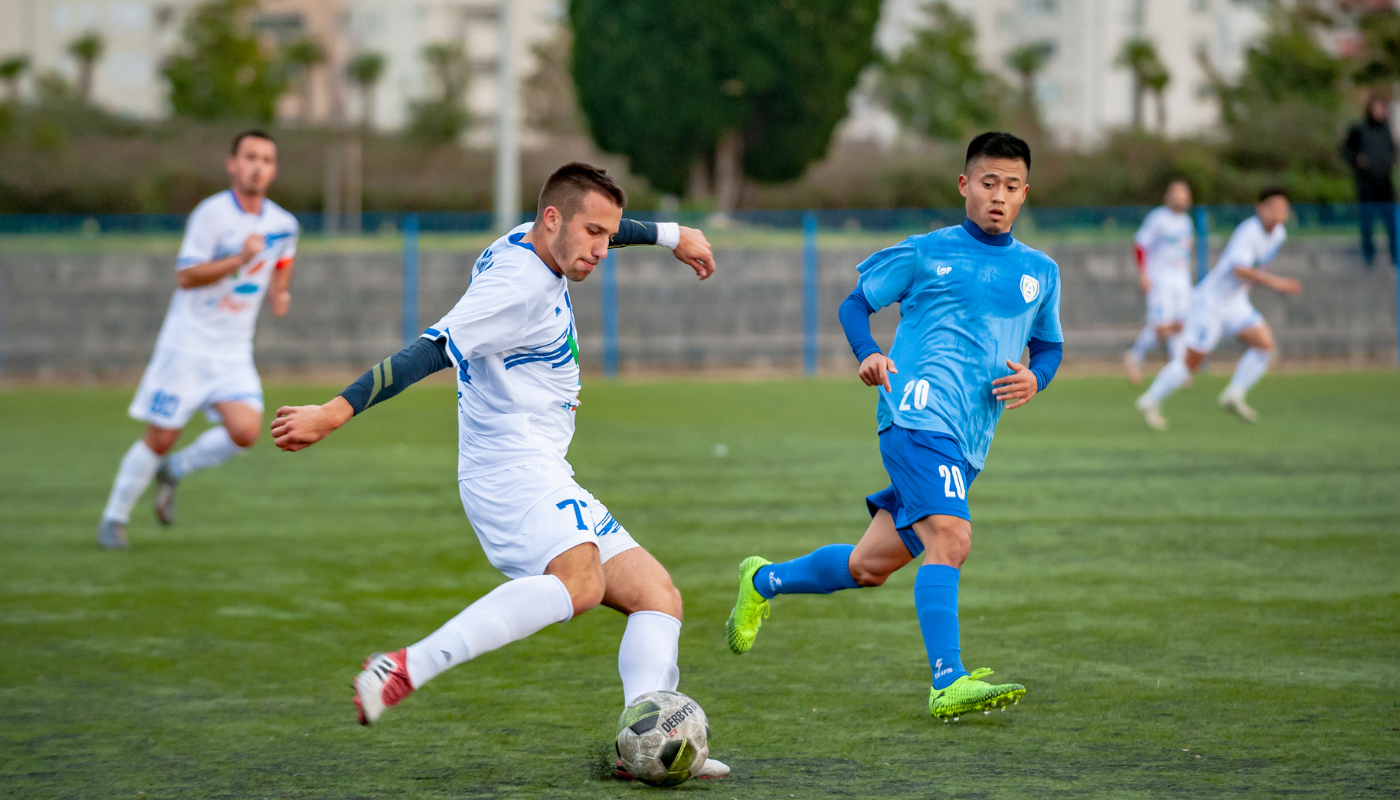When it comes to the world of sports, the differences between soccer and football cleats are as distinct as the games themselves. What is the difference between soccer and football cleats? This is a question that has long intrigued athletes, coaches, and sports enthusiasts alike. In this comprehensive article, we will delve into the nuances that set these two types of footwear apart, exploring their unique features, design considerations, and the crucial role they play in the respective sports.
Understanding the Fundamentals of Soccer and Football Cleats
Soccer and football are two of the most popular and widely played sports around the globe. While they share some similarities, the distinct nature of each game calls for specialized footwear that caters to the unique demands of the athletes. Soccer cleats are designed to provide maximum traction, agility, and ball control on the smooth, manicured surfaces of a soccer pitch, while football cleats are engineered to provide stability, support, and grip on the varied terrain of a gridiron.
The Anatomy of Soccer Cleats
Soccer cleats are known for their sleek, lightweight design, with a focus on enhancing the player’s touch and control of the ball. These cleats typically feature a thin, flexible upper made from materials like synthetic leather or microfiber, which allows for a more natural feel and improved ball handling. The outsole of a soccer cleat is usually studded or molded, with the placement and shape of the studs being crucial for different playing surfaces.
Stud Configurations
The stud configuration is one of the most important aspects of soccer cleats, as it directly impacts traction and performance. Firm Ground (FG) cleats, for example, feature a pattern of conical or blade-like studs that provide optimal grip on natural grass surfaces. Soft Ground (SG) cleats, on the other hand, have longer, thicker studs that are designed for use on softer, muddy fields, while Artificial Grass (AG) cleats have more rounded studs that are suited for synthetic playing surfaces.
Common Soccer Stud Types:
- Firm Ground (FG): Ideal for natural grass.
- Soft Ground (SG): Best for muddy or soft fields.
- Artificial Grass (AG): Suited for synthetic turf.
- Turf (TF): Designed for hard, artificial surfaces.
Toe Box and Midfoot
The toe box of a soccer cleat is typically narrow and pointed, allowing for precise ball control and improved touch. The midfoot area, which is the arch of the foot, is also designed to be flexible and supportive, enabling the player to change direction quickly and explosively.
Heel Counter and Ankle Support
Soccer cleats often have a reinforced heel counter that provides stability and support, reducing the risk of ankle injuries during sudden changes of direction. The level of ankle support can vary, with some cleats offering more coverage and support than others, depending on the player’s needs and preferences.
The Anatomy of Football Cleats
Football cleats, on the other hand, are built to provide maximum stability, traction, and support on the uneven, often rugged terrain of a football field. These cleats feature a more robust and durable construction, with a focus on protecting the athlete from the high-impact collisions and sudden movements inherent to the sport.
Stud Configurations
Football cleats typically have a more aggressive stud pattern, with larger, more pronounced studs that can penetrate the ground for superior traction. The stud configuration can vary depending on the playing surface, with Molded Cleats having a fixed pattern of studs, and Detachable Cleats allowing players to swap out the studs for different field conditions.
Common Football Stud Types:
- Molded Cleats: Fixed stud patterns for consistent traction.
- Detachable Cleats: Removable studs for versatility across different surfaces.
- Multi-Ground Cleats: Suitable for various field conditions with interchangeable studs.
Toe Box and Midfoot
The toe box of a football cleat is often more rounded and wider than that of a soccer cleat, providing more protection and stability for the player’s toes during impact and tackles. The midfoot area is also more reinforced, with additional support and structure to prevent excessive flexing and to distribute the force of impact.
Heel Counter and Ankle Support
Football cleats feature a sturdy heel counter and extensive ankle support, which is essential for protecting the player’s ankles and providing a secure, locked-in fit. This increased support helps to prevent ankle sprains and other common football-related injuries.
Comparing Soccer and Football Cleats: Key Differences
While both soccer and football cleats share the common goal of enhancing an athlete’s performance, the distinct nature of each sport necessitates a tailored approach to the design and construction of these specialized footwear.
Key Differences at a Glance
| Feature | Soccer Cleats | Football Cleats |
| Weight | Lightweight for agility and speed | Heavier for stability and support |
| Flexibility | High flexibility for ball control | Low flexibility for durability |
| Stud Configuration | Varied patterns for different surfaces | Aggressive, often detachable studs |
| Toe Box | Narrow and pointed for precision | Wider and rounded for protection |
| Midfoot | Flexible and supportive | Reinforced and structured |
| Ankle Support | Lower-profile for mobility | Extensive and rigid for injury prevention |
Weight and Flexibility
- Soccer Cleats: Generally lighter and more flexible, prioritizing agility and ball control.
- Football Cleats: Heavier and more rigid, focusing on stability and support.
Stud Configuration
- Soccer Cleats: Feature a variety of stud patterns, each designed for specific playing surfaces.
- Football Cleats: Typically have a more aggressive, multi-purpose stud configuration.
Toe Box and Midfoot
- Soccer Cleats: Narrow, pointed toe box for improved ball touch; midfoot emphasizes flexibility.
- Football Cleats: Wider, rounded toe box for protection; midfoot prioritizes support and reinforcement.
Ankle Support
- Soccer Cleats: Relatively lower-profile ankle support, emphasizing agility.
- Football Cleats: More extensive ankle support with a higher, more rigid heel counter.
Choosing the Right Cleats for Your Sport
When it comes to selecting the appropriate cleats for your sport, it’s crucial to consider the specific demands of the game, the playing surface, and your personal preferences as an athlete. Soccer players will typically prioritize a lightweight, flexible cleat that enhances their touch and ball control, while football players will favor a more robust, supportive cleat that offers stability and protection.
Factors to Consider:
- Playing Surface: Choose cleats designed for the specific field conditions you’ll encounter.
- Position and Play Style: Different positions may require different cleat features.
- Comfort and Fit: Ensure the cleats fit well and provide adequate support.
- Durability: Consider the materials and construction for long-term use.
- Budget: Balance quality features with your budget constraints.
Conclusion
The distinct worlds of soccer and football cleats reflect the unique demands and challenges of their respective sports. While both types of footwear share the common goal of enhancing an athlete’s performance, the design and construction of these specialized shoes are tailored to meet the specific needs of each game. Understanding the key differences between soccer and football cleats, from their weight and flexibility to their stud configurations and ankle support, is essential for athletes to choose the right footwear and optimize their on-field experiences.
FAQs
Main Difference: Soccer vs. Football Cleats
Soccer cleats are lightweight and flexible for agility, while football cleats are sturdy for protection and traction.
Stud Configurations
Soccer cleats come in various stud patterns (FG, SG, AG) for different surfaces. Football cleats have aggressive studs for traction on diverse terrains.
Weight Comparison
Soccer cleats are lighter for agility, whereas football cleats are heavier for stability and support.
Toe Box and Midfoot Differences
Soccer cleats feature a narrow toe box for ball control; football cleats have a wider one for protection. Midfoot areas prioritize flexibility in soccer and support in football.
Ankle Support Design
Football cleats offer more ankle support with higher heel counters to withstand impacts. Soccer cleats have lower support to enhance agility.

With over six years of experience in the betting industry, Alex shares valuable insights, tips, and strategies to help bettors make informed decisions. He is dedicated to exploring the latest betting applications and providing thorough reviews to enhance the user experience. When not analyzing stats or watching matches, Alex enjoys engaging with the football community and discussing the latest trends in sports betting.

